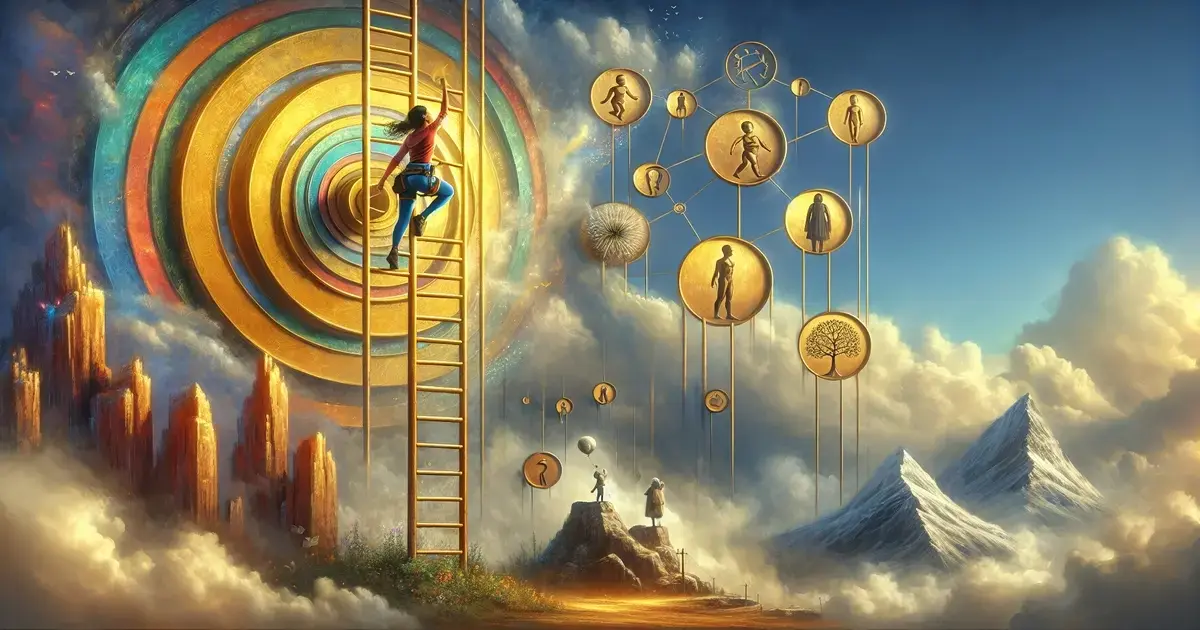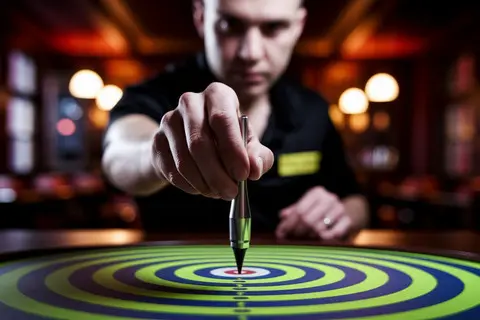Learn From Your Mistakes: Grow Personally & Professionally
Master the art of learning from mistakes to achieve personal and professional growth. Explore strategies to turn failures into successes.

To learn from your mistakes is to identify what went wrong, why it did, and adjust your strategy for the future. People from all walks of life can apply this humble ability to thrive at work, as a parent, or with friends. Candid self-check keeps you open to new possibilities and improving in micro-increments daily. Errors indicate where expansion is still possible, not where it ceases. Tales from coaches, professors, and parents reveal that if you learn from your mistakes, you'll make smarter decisions and trust yourself more. In the remainder, you'll discover real-world advice and anecdotes demonstrating how minor adjustments can transform failures into victories.
" Every mistake is a chance to pinpoint the lessons, plan to improve, and move forward with assurance. "
Key Takeaways
- We all slip up, sometimes out of pride, peer pressure, or habit, but this is human and not a personal indictment.
- Assuming ownership and reviewing errors without blame allows you to extract lessons instead of feeling demoralized.
- Every mistake is a chance to pinpoint the lessons, plan to improve, and move forward with assurance.
- Adopting a growth mindset will make you more likely to see failures as spurts, which can result in transformative innovation.
- Mechanisms such as reflective journaling and feedback transform difficulties into pedagogical opportunities and cultivate resilience for the future.
- Changing your self-talk around failure instills self-compassion and drives persistent progress, regardless of how far along you are.

Why We Fear Mistakes
We make mistakes when our actions, thinking, or judgments miss the mark. In most disciplines, such as statistics, "error" is simply the difference between what we observe and what is correct. Mistakes weigh more in life as they serve as stepping stones to growth. They can make us feel vulnerable or even defective, but these life lessons can influence decisions and shape our identity.
The Ego
Our ego wants to defend our self-identity, often leading to misconceptions about our abilities. When we err, it can seem like evidence that we're not as intelligent, talented, or careful as we wanted. A minor stumble, such as forgetting a vital meeting talking point, can cascade into soul-searching. Your brain begins to ruminate on what went wrong, fueling the belief that we're less competent. This is typical whether you're heading up a team or just picking up a new craft. The motivation to seem capable or "flawless" compels us to conceal mistakes or eschew risk. Perfection is a myth. We all fall occasionally, but these learning experiences are stepping stones to growth. Mistakes, though hard on the ego, are just indicators that we're attempting and absorbing new knowledge.
Social Pressure
Most societies prize success and frequently regard errors as shameful. When friends, family, or colleagues expect us to 'get it right,' slipping up feels like letting everyone down. A stupid mistake—a gaffe in a public speech—tends to get noticed and remembered more than our victories. This stress makes us careful and may hinder our learning experience. We fear mistakes and reactions: judgment, gossip, or exclusion. In certain cultures, the drive to perfectionism begins at a young age—grades, test scores, and even athletics. No wonder we start to conceal our missteps or resist new experiences. The reality is, they're all jammed full of life lessons on the journey.
Past Experiences
A few of us fear mistakes due to old memories. Perhaps a teacher chewed them out for a small mistake, or their boss blew a gasket over a minor slip. These moments linger. They instruct us to associate error with suffering or shame. Others even assume that error is permanent, or that a single stumble is devastating. That's hardly the case, but ancient emotions are complex to uproot.
For many, the fear also comes from not knowing how to fix what's wrong. If no one's ever witnessed a mistake result in growth or repair, they might assume all errors have a hard cost. We can learn to deal with mistakes, and if we allow them, each can point to a new way forward.
Related Tips
How to Learn From Mistakes
Mistakes are a learning experience, but not everyone will see it that way—a few psychologists, such as B.F. Skinner and Charles Ferster advocated errorless learning, demonstrating that you don't necessarily have to make mistakes to learn. In real life, we all discover that mistakes give potent life lessons, molding growth and transformation. Whether at work, school, or daily life, here's how to learn from mistakes in concrete, actionable ways.
1. Acknowledge Ownership
Ownership is recognizing your part in what occurred, a crucial life lesson that enriches your learning experience. Blame blocks growth and wisdom, whether directed at others or the environment. If you under- or over-estimate a work project's timeline, take responsibility rather than blame your team or the weather. This step creates credibility—everyone views you as trustworthy. Mistakes are relative—what feels like a substantial blunder to you might not register to another person. Success and failure are about context, belief, and expectations, just as grading scales have shifted over the years to accommodate new norms.
2. Analyze Objectively
Stepping back helps you see the reality and understand essential life lessons. Instead, ask what caused the mistake and what you did right or wrong. For instance, if you blow a deadline, write down what bogged you down and what got you to the edge. Input from others, such as your boss or friends, tends to identify what you overlooked. As Malcolm Gladwell observes about outside factors in his work, be candid about your situation. Break things down with simple questions such as "What could I do differently?" or "What helped me most?" This reflection can provide insights into your decision-making process.
3. Identify Lessons
Every mistake, large or small, has a life lesson to impart. You learned to proofread or to request assistance sooner. Learning isn't just factual, but inductive, like natural selection, some forms get passed down. As Carol Dweck's growth mindset research demonstrates, the perspective of seeing a mistake as an opportunity to grow makes all the difference. Sharing your insights with others can prevent them from making the same missteps. If you're starting, recognize that imperfection is expected and contributes to growth.
4. Create a Plan
Once you've discovered the life lesson, formulate a plan not to repeat the error. This might involve setting reminders, discussing new steps with your instructor, or setting smart goals to track your progress. Share your plan with others so they know you're trying to improve. Sometimes, a minor adjustment can tip results, like adding more people to a survey to strengthen the sample and reduce the margin of error, providing more accurate results.
5. Forgive Yourself
Releasing guilt is part of moving on, a crucial life lesson. We all make missteps, and even errorless learning in education shows flawless results are rare. It's not the stumble that counts—it's the learning experience and how you respond.

The Growth Mindset
A growth mindset, on the other hand, is the belief that talents can be acquired with effort, learning, and feedback. This brilliant concept, introduced by Carol Dweck, offers valuable insights into how we treat errors and failures in our lives, whether in the office, the classroom, or the studio, turning missteps into stepping stones.
Fixed vs. Growth
A fixed mindset leads people to view their abilities as carved in stone. They might complain, 'I'm just not good at math,' and quit trying after a failure. By contrast, a growth mindset treats abilities as malleable with effort. Carol Dweck's research demonstrates that individuals with a growth mindset approach challenges as opportunities to learn, not threats to their self-worth.
A significant portion of innovation and creative leaps have come from error. Consider penicillin, which happened by accident, or the creation of the microwave. Growth-mindset individuals view these mistakes as teachable moments rather than evidence of failure. For example, a student might view a poor test score as evidence that they should experiment with new study habits, not quit.
Cultivating Growth
Constructing a growth mindset requires little, consistent nudges. One must journal what went wrong and how it could be done better. Discussing mistakes with friends or mentors can spark new lines of thought. In professional environments, groups may leverage review meetings to identify aberrations – departures from norms – and generate concrete solutions.
Mistake-based learning in science and tech functions similarly. Models switch their settings when the actual result differs from the prediction. This concept finds applications in natural language processing and computer vision, commonly with the GeneRec algorithm. The system learns through prediction error and stepwise adjustment.
Flubs in entertainment, like bloopers, became popular because they demonstrated that everyone falls. In the '50s, Kermit Schaefer popularized the term 'blooper.' UK and BBC shows poked fun at mistakes on air. Those moments remind us not to be afraid of making mistakes but to embrace and laugh about them.
Nonconformities in quality management are tracked and sorted to capture root causes. Occasionally, bad communication or absent materials cause these problems. By sorting and talking about issues, teams can continue to improve and avoid repeating mistakes.
Mistakes as Innovation Fuel
Whether made by college students or adults, mistakes often serve as stepping stones for advancement, fueling innovation and creativity.
Professional Setbacks
A career can be like a chess game, in which grandmasters occasionally blunder. A blunder–an egregious error–can take a strong position and transform it into a vulnerable one in a snap. In a lot of work, it's instead more like forgetting your opponent's next move in chess – a slip, an oversight, a miscalculation causing a setback. Even the best leaders and experts err, from minor blunders to monumental errors. Thomas Edison, for instance, screwed up over 1,000 times trying to invent the light bulb. He said every failure pulled him closer to success. Henry Ford treated each failure as a fresh opportunity to do it over, but this time, smarter. These stories demonstrate that not setbacks define us, it's how we respond to them.
Acknowledging work mistakes is the best way to learn from them. Shirking blame and candidness about mistakes pave the way for genuine learning. Thereafter, pausing to analyze what caused the error—whether an attention slip or missing competencies—assists in identifying avenues for improvement. This candid examination of failure can catalyze improved decisions in the future.
Organizational Culture
In most companies, a mistake-friendly culture usually results in more innovation. As Steve Jobs put it, recognizing change as an opportunity, rather than a threat, catalyzes real progress. Linus Pauling, a two-time Nobel laureate, believed in a torrent of ideas and pitching the duds as the organic process of creating something new.
When teams employ turn-of-the-century tools like SWOT analysis, they identify strengths, weaknesses, opportunities, and threats. SWOT analysis helps individuals recognize where errors occurred, why they occurred, and what can be repaired. It demonstrates how to leverage positive characteristics to capture new opportunities or transform liabilities into assets. It's not about blame; it's about constructing a reliable trail for the tribe.
Mistakes come in all shapes and sizes—from flubbing a goal to overlooking a market trend. Companies that see mistakes as an opportunity to learn, not a basis for penalty, tend to be agile and keep leading.

Your Error-Proof Toolkit
Learning from mistakes is not failure avoidance—it's constructing a toolkit that equips you to catch, fix, and avoid errors next time. This process offers valuable life lessons and insights, providing concrete techniques and routines from various disciplines, acting as stepping stones to help you maintain resilience whenever you encounter setbacks.
Reflective Journaling
Jotting down what failed and what you attempted is an easy yet effective way to gain insights and wisdom. Reflective journaling allows you to identify trends in your mistakes and observe which concepts were successful, serving as valuable learning experiences. Many find that when they write about a misstep, they start to break it down: What caused it? How did you feel? Did you use trial and error, or did you have a plan? Take animal behavior, for instance; trial and error is how animals learn, and writing about your own "trials" can inspire better answers next time. Edward Lee Thorndike's work demonstrated how this approach constructs genuine learning over time. It operates the same in real life, whether you're cracking math problems or trying to tame a challenging work project.
Seeking Feedback
Seeking brutally honest feedback from others is crucial to learning quicker. Straightforward and clear feedback prevents little errors from ballooning into larger ones. Positive feedback can go haywire in digital systems, like audio feedback or boom-bust cycles. The same goes for people: too much praise without correction can lead to repeating errors. Error-proof feedback loop: balancing feedback — you can identify what's working and what's not, just as in error correction in data systems. One tip: make it a habit to get feedback after each big task—whether from a friend, coworker, or mentor—so you keep improving.
Hearing feedback is just half the work. You need methods to apply it—experiment by transcribing the highlights from your feedback session and planning mini-hacks. Even color-coding your notes or setting reminders can help you act on what you learn.
Future-Proofing
Fixing the process is the most effective way to prevent the same error from recurring. Begin with simple checklists, picture-based reminders, or color-coded stickers. These tried-and-true poka-yoke-style error-proofing tools work everywhere, from automotive plants to healthcare settings. Shape sorting, like plugs that only go in one way, keeps things easy and secure. Interlocks are another layer, like a washing machine that won't run with an open door.
Taking time to revisit and revise these systems counts. Error-proofing isn't a magic bullet; it's a habit. Change the process when you spot a weak spot, and use three levels: catch errors early, stop work when there's a problem, or design the mistake out completely. These habits improve efficiency by as much as 60% and reduce errors by 50%, making life easier for you and everyone you collaborate with.
The Language of Failure
Failure can mean not doing something well, missing a step, or not reaching our aspirations. This concept varies by location and respondent. Some view failure as the antithesis of success, while others see it as a phase in learning and progressing. The language we use — and think — around failure influences how we cope with it, and even how much we grow from this learning experience.
Reframing Words
Words count. Saying 'I failed' is weighty, but saying 'I tried and didn't nail it this time' leaves the door ajar for development. As it turns out, for most of us, simply altering the language we employ can transform how we experience the disappointment. When we hear about companies that 'failed' initially and became cult favorites, it reveals how a single word can't capture an entire narrative.
In our culture, failure has acquired a moral label, suggesting cowardice or a personality defect. History, particularly in the U.S., demonstrates how failure's significance has shifted. Today, few celebrate failure, embracing it as a mark of effort and education. This linguistic turn assists individuals in recognizing the benefits of initially missing the mark.
Internal Dialogue
After an error, what we say to ourselves can inform what we do next. Others retreat into brutal self-talk, name-calling, or saying they 'always screw up.' This can make identifying what went wrong and what can be repaired challenging. Mindfulness assists — when we observe our thoughts without criticism, we begin to rupture the old pattern of lambasting ourselves.
A growth mindset is crucial here. It means viewing errors as evidence that we're growing, not as a sentence on our identity. Self-kind folk are more likely to look at what failed, inquire why, and try a new approach. Research reveals that while most of us would like to learn from our errors, pride or fear occasionally takes over, resulting in the "sour-grape effect"–we minimize what we lost rather than confront it.
Fallacies and Reasoning
Errors exist in our actions and reasoning. Fallacies—errors in logic—have a way of creeping into our claims, sometimes unbeknownst to us. These may be blatant errors (formal fallacies) or more nuanced, such as when we employ fallacious reasoning in everyday life or the press.
Identifying mistakes in ourselves and others can help us think more clearly and make better decisions. This skill develops with experience and candor.
Creative Failure
Inevitable failures are the ground of invention. Creative failure is about perceiving every stumble as progress. Many artists, inventors, and thinkers describe how their finest work stemmed from what went wrong.
To be vulnerable to this type of failure is to relinquish fear and commit yourself to the willingness to attempt, stumble, and try again. It's not fun but hardens and prepares us for what's to come.

Conclusion
To learn from your errors, begin with honesty. Missed a beat? Identify what failed. Experiment, say, 'Help!', and post your discoveries. Each stumble tells a tale. Thomas Edison made thousands of attempts before the light bulb. J.K. Rowling encountered piles of rejections before Harry Potter's arrival on bookshelves. Growth is from tiny steps, not giant leaps. Take a breath, chuckle, dust off, and try once more. Mistakes might sting, but they form grit and ignite ideas. Remain humble, stay inquisitive, and transform each gaffe into a seminar. Okay, let's see what your next mistake will teach. Dive, and evolve.







